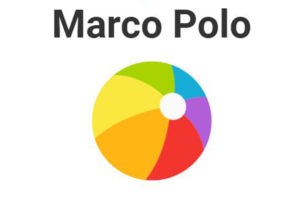Marco Polo: The Video Walkie-Talkie in Your Pocket
Published on October 5, 2021, at 5:50 p.m.
by Ashley Cunigan.
Most of us have all played the swimming pool game — yet the new Marco Polo is a different form of phone tag. The social media platform took off in 2014 and has slowly built its user base during the COVID-19 pandemic. Similar to Snapchat, Marco Polo is a video messaging app designed for friends and family to stay in touch on their own time.
But what makes the platform stand out from its large competitors?

Deemed as the “Snapchat for boomers,” Marco Polo was founded to help families stay connected to loved ones. The platform was created right before founders Vlada and Michal Bortnik gave birth to their second child. For the new family, sending an occasional text message just didn’t cut it. Instead of trying to set up a FaceTime or Zoom call, Marco Polo allows people to connect through video text messages.
Unlike other messaging apps, the video walkie-talkie prides itself on simple features. Whereas Instagram and Facebook allow for content to be shared across a large network, Marco Polo is private and ad-free — allowing users to form close communities. Family and friends are able to feel comfortable knowing that their information is not going to be displayed for the world to see. Simplicity in the platform’s features also causes less pressure for users to compare themselves to others’ success and social status.

Since the COVID-19 pandemic began, over 10 million people have downloaded Marco Polo. As the world was forced to social distance, there was a need to create a digital space for organic conversations. The video walkie-talkie became a favorite app of many celebrities and quickly became attractive to family members. Pink and Ice T both used Marco Polo to keep in touch with loved ones they couldn’t see in person. Having celebrity endorsements increased the platform’s reach and allowed followers to become more aware and comfortable using the platform.
Because Marco Polo does not run advertisements or monetize consumer data, the platform is having issues with competitors. Since Marco Polo’s early release, the social network has retained a low brand awareness. Instead of running advertisements, the platform has launched Marco Polo Plus and Marco Polo Channels, which support HD video, photo polos and speed controls. Users are still able to send unlimited chats with the free version, yet Marco Polo’s growth may become dependent on company revenue.
Building consumer trust is at the forefront of the company’s mission. While 2020 was a year with many challenges, Marco Polo persevered in connecting families and friends. The video walkie-talkie continues to build its corporate reputation through public relations efforts rather than digital advertising and marketing. Marco Polo values the users’ intentions over trying to gain the world’s attention.




